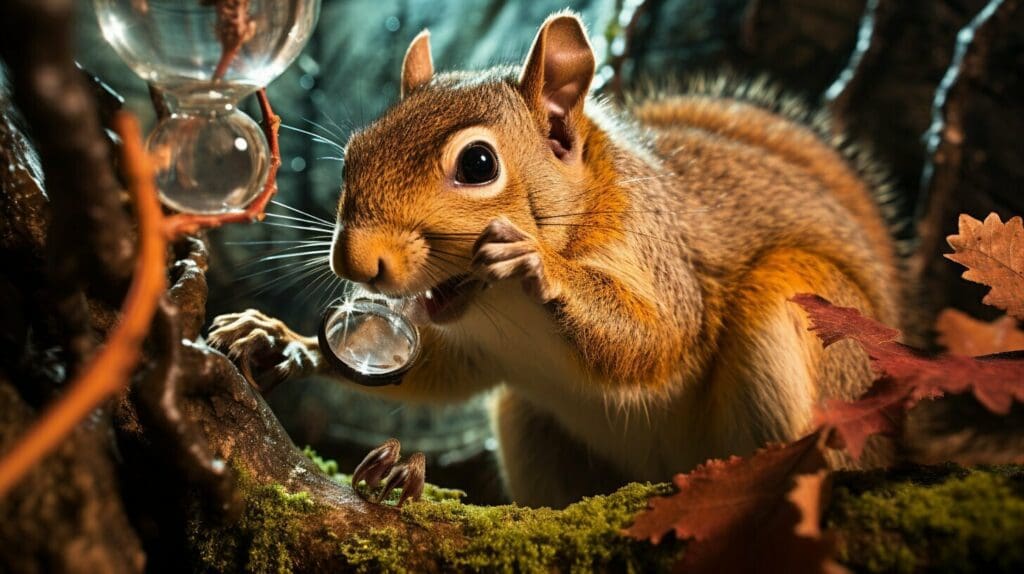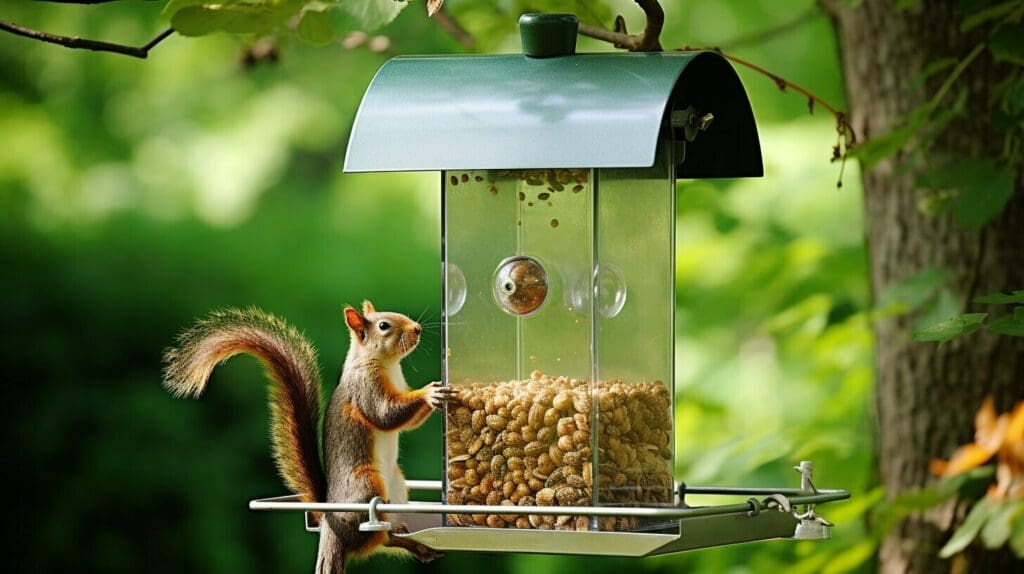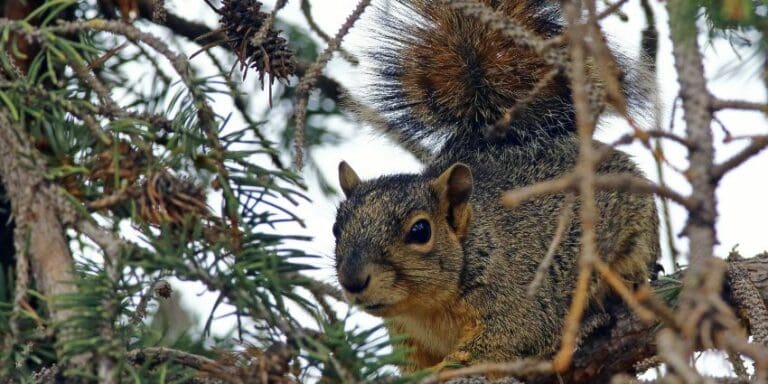What Germs Do Squirrels Carry? Discover the Hidden Dangers
Are you a nature lover who enjoys feeding squirrels in the park? Or maybe you have a family of adorable squirrels living in your backyard tree? While these furry creatures might seem innocent and harmless, they can actually carry a range of dangerous germs that pose a serious threat to human health.

So, what germs do squirrels carry? The answer might surprise you. From bacterial infections like salmonella and leptospirosis to viral diseases like rabies and encephalitis, there are numerous health risks associated with squirrel contact.
But don’t panic just yet. With the right knowledge and precautions, you can protect yourself and your loved ones from squirrel-borne illnesses. Keep reading to learn more about the potential dangers of squirrel contact and how you can stay safe.
Key Takeaways:
- Squirrels can carry a range of dangerous germs that pose a serious threat to human health.
- Bacterial infections like salmonella and leptospirosis, as well as viral diseases like rabies and encephalitis, are just a few of the health risks associated with squirrel contact.
- With the right knowledge and precautions, you can protect yourself and your loved ones from squirrel-borne illnesses.
Zoonotic Diseases from Squirrels: A Closer Look
Picture this: you’re out for a stroll in the park, and you see a cute little squirrel scurrying around. You might be tempted to approach it, but hold your horses! Did you know that squirrels can carry diseases that are harmful to humans?
In fact, squirrels are known carriers of zoonotic diseases, which are infections that can be transmitted from animals to people. These squirrel-transmitted infections can range from mild to severe and can be contracted through various forms of contact, such as bites, scratches, or even just being in close proximity to the animal.
So, what are some of the squirrel-borne illnesses that you should be aware of? Let’s take a closer look:
| Squirrel-borne disease | Transmission | Potential symptoms |
|---|---|---|
| Plague | Bite from an infected flea on a squirrel | Fever, chills, weakness, swollen and painful lymph nodes |
| Tularemia | Direct contact with an infected squirrel or its droppings | Fever, chills, headache, muscle aches, skin ulcers |
| Salmonellosis | Ingestion of food or water contaminated with squirrel feces | Diarrhea, fever, abdominal pain, vomiting |
It’s important to note that these are just a few examples of the squirrel-borne bacteria and viruses that exist. There are many other potential infections that can be transmitted through contact with squirrels.
So, what can you do to protect yourself from these health risks? First and foremost, avoid direct contact with squirrels. It’s also important to take proper hygiene measures, such as washing your hands thoroughly with soap and water after being in areas where squirrels are present.
By taking these simple precautions, you can minimize the risk of contracting diseases from squirrels. Remember, squirrels may be cute, but interacting with them can pose very real health hazards.

Common Squirrel-Carried Pathogens: What You Need to Know
When it comes to squirrels, they’re not just cute and fluffy creatures scurrying around in trees. Unfortunately, they can also carry a variety of germs that can be harmful to human health. Let’s take a closer look at some of the most common squirrel-carried pathogens that you need to know about.
| Pathogen | Symptoms | Transmission |
|---|---|---|
| Rickettsia prowazekii | Fever, headache, muscle aches, nausea, vomiting, rash | Through the bite of infected fleas |
| Bartonella | Fever, headache, muscle aches, fatigue, skin lesions | Through the bite of infected fleas or scratches from infected animals |
| Salmonella | Fever, diarrhea, abdominal cramps | Through contact with contaminated feces or surfaces |
| Leptospira | Fever, muscle aches, vomiting, diarrhea, jaundice, rash | Through contact with contaminated water or soil |
| Yersinia pestis | Fever, chills, weakness, cough, chest pain, vomiting, diarrhea | Through the bite of infected fleas |
As you can see, squirrels can carry some pretty serious pathogens that can cause a range of symptoms. Some of these, like salmonella, can be contracted through contact with contaminated surfaces or feces, while others, like rickettsia prowazekii, are transmitted through the bite of infected fleas. It’s important to be aware of these potential risks and take steps to minimize your exposure.
Remember, just because squirrels are cute and fun to watch doesn’t mean they can’t pose a threat to your health. Stay vigilant and protect yourself and your loved ones from these invisible dangers.

Understanding the Health Risks from Squirrel Contact
Let’s face it – squirrels are adorable. Their bushy tails and playful antics make them an endearing sight in parks and backyards alike. But don’t be fooled by their cute exterior. Squirrels are notorious carriers of germs, and coming into contact with them can put your health at risk.
So what exactly are the health risks of squirrel contact? Well, for starters, there’s the risk of zoonotic diseases. These are diseases that can be transmitted from animals to humans. Squirrels are known to carry a variety of zoonotic diseases such as leptospirosis, tularemia, and salmonella.
| Zoonotic Disease | Symptoms |
|---|---|
| Leptospirosis | High fever, chills, headache, muscle aches, vomiting, red eyes, abdominal pain, jaundice (yellowing of skin and eyes), rash, kidney damage, liver failure |
| Tularemia | Fever, chills, headache, muscle aches, joint pain, dry cough, difficulty breathing, chest pain, abdominal pain, vomiting, diarrhea, swollen lymph nodes |
| Salmonella | Fever, diarrhea, stomach cramps, headache, nausea, vomiting |
In addition to zoonotic diseases, squirrels can also carry a variety of bacterial and viral infections. These can be transmitted through direct contact with the animal or through contact with their droppings. Some of the most common infections include hantavirus, plague, and ringworm.
Fun fact: Did you know that squirrels can carry fleas infected with the bubonic plague? That’s right, the same disease that wiped out a third of Europe’s population in the Middle Ages. So next time you see a squirrel, remember – they may look cute, but they could be carrying a deadly disease.
So what can you do to protect yourself from squirrel germs? For starters, avoid direct contact with squirrels and their droppings. If you do need to handle them, wear protective gloves and wash your hands thoroughly afterwards. It’s also a good idea to keep your living space squirrel-proof to prevent them from entering your home.

Finally, if you do start experiencing symptoms of a potential squirrel-related infection, don’t hesitate to seek medical care. Some of the signs to watch out for include fever, muscle aches, vomiting, and diarrhea. Early detection and treatment can make all the difference in preventing serious complications.
Remember, while squirrels may be adorable, they can also be dangerous. By taking the proper precautions and staying informed about the risks involved, you can stay safe and healthy while still enjoying the sight of these cute little critters.
Protecting Yourself and Your Loved Ones
Now that you know about the potential health risks from squirrel contact, it’s time to take action to protect yourself and those around you. Here are some practical tips to keep in mind:
- Avoid direct contact with squirrels: While it may be tempting to get up close and personal with these furry creatures, it’s important to keep your distance. Squirrels can carry a variety of germs that can be transmitted through bites, scratches, or even just close contact.
- Practice good hygiene: Make sure to wash your hands thoroughly with soap and water after spending time outdoors, especially if you’ve come into contact with soil or other potential sources of germs. If you have pets that may come into contact with squirrels, be sure to wash their paws as well.
- Keep living spaces squirrel-proof: Seal up any holes or gaps in your home or other buildings to prevent squirrels from gaining access. You may also want to consider using squirrel-proof bird feeders or other deterrents to keep these critters at bay.
- Be aware of your surroundings: Squirrels aren’t the only animals that can carry zoonotic diseases, so it’s important to be mindful of other potential sources of infection as well. Avoid contact with wild animals whenever possible and be cautious when handling domestic animals such as cats and dogs.
By following these simple steps, you can significantly reduce your risk of contracting squirrel-borne illnesses. However, it’s important to remember that even with the best precautions, accidents can still happen. If you experience any symptoms of illness such as fever, fatigue, or muscle aches after coming into contact with squirrels or their droppings, seek medical attention right away.
Remember, staying informed and taking appropriate measures is the key to staying healthy and happy, even in the face of potential health risks. So go ahead and enjoy the beauty of nature, but do so with caution and awareness!

Seeking Medical Care: When to Be Concerned
Okay, so you’ve taken all the necessary steps to avoid contact with squirrels, but somehow you still ended up with a fever, headache, and a sudden urge to climb a tree. Don’t panic! But also, don’t ignore those symptoms.
If you suspect that you’ve been exposed to squirrel-borne germs, it’s essential to seek medical care right away. Some of the common symptoms of these infections include fever, muscle aches, coughing, and difficulty breathing. If left untreated, these infections can result in severe illness and even death, especially in individuals with weaker immune systems.
When you visit your healthcare provider, be sure to mention any possible exposure to squirrels and the symptoms you’re experiencing. They may order tests to determine the specific infection and prescribe appropriate treatment.
It’s crucial to take squirrel-borne infections seriously and seek medical care as soon as possible. Remember, squirrels may look cute, but they can pack a dangerous punch!

“If you suspect that you’ve been exposed to squirrel-borne germs, it’s essential to seek medical care right away.”
Protecting Yourself and Your Loved Ones
Let’s face it, squirrels may be cute, but they are not worth risking your health over. Fortunately, there are simple steps you can take to minimize the risk of contracting diseases from these furry creatures.
Tip #1: Keep Your Distance
As much as you may love the sight of a squirrel chowing down on a nut, it’s best to admire them from a safe distance. Avoid touching or feeding squirrels, as this can increase your risk of exposure to their germs. Remember, squirrels are wild animals, not pets.
Tip #2: Practice Good Hygiene
When it comes to protecting yourself from squirrel germs, proper hygiene is key. Be sure to thoroughly wash your hands with soap and water after coming into contact with any squirrels or their droppings. This will help prevent the spread of germs and reduce your risk of infection.
Tip #3: Squirrel-Proof Your Home
If squirrels have taken a liking to your home, it’s important to take steps to squirrel-proof it. This can include sealing any gaps or holes in your roof or attic, using mesh screens on windows, and keeping garbage bins tightly sealed. By making your home less attractive to squirrels, you can reduce the risk of exposure to their germs.
Seeking Medical Care: When to Be Concerned
If you suspect you have been exposed to squirrel-borne germs, it’s important to be vigilant about any signs of illness. This can include symptoms such as fever, fatigue, and muscle aches. If you experience any of these symptoms, seek medical attention right away.
When to Seek Emergency Care
In rare cases, exposure to squirrel germs can lead to more serious conditions, such as meningitis or encephalitis. If you experience symptoms such as severe headaches, confusion, or seizures, seek emergency medical care immediately.
Conclusion
While squirrels may seem harmless, they can carry a range of dangerous germs that can put your health at risk. By following these simple tips and being mindful of the potential dangers, you can protect yourself and your loved ones from squirrel-borne illnesses. Stay safe, and remember: admire squirrels from a distance, not up close and personal.
FAQ
Q: What germs do squirrels carry?
A: Squirrels can carry a variety of germs, including zoonotic diseases and common pathogens. It’s important to be aware of the potential health risks associated with squirrel contact.
Q: What are zoonotic diseases from squirrels?
A: Zoonotic diseases are diseases that can be transmitted from animals to humans. Squirrels may carry various zoonotic diseases, and it’s crucial to understand how these infections can be transmitted.
Q: What are the common squirrel-carried pathogens?
A: Squirrels can carry both bacterial and viral infections. It’s essential to know about the specific pathogens that squirrels may harbor and the potential risks they pose.
Q: What are the health risks from squirrel contact?
A: Direct or indirect contact with squirrels can lead to various health risks. Understanding these risks and taking necessary precautions is crucial to safeguarding your health.
Q: How can I protect myself from squirrel germs?
A: To minimize the risk of contracting diseases from squirrels, it’s essential to practice proper hygiene, avoid direct contact, and squirrel-proof your living spaces.
Q: When should I seek medical care for squirrel-related illnesses?
A: If you experience signs and symptoms of potential squirrel-borne infections, it’s important to seek medical care. Knowing when to be concerned and taking appropriate action is crucial.





